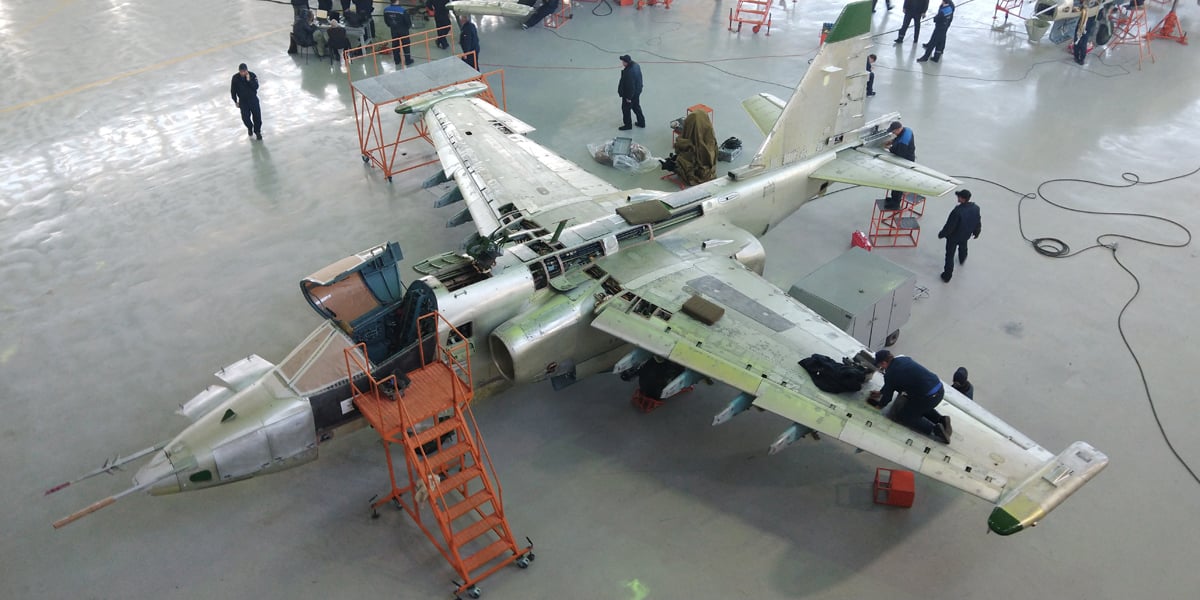Click Here to View This Page on Production Frontend
Click Here to Export Node Content
Click Here to View Printer-Friendly Version (Raw Backend)
Note: front-end display has links to styled print versions.
Content Node ID: 400103
As part of Kazakhstan’s latest move to become the region’s most important aircraft manufacturer and service provider, a tripartite agreement was signed on December 14 covering main parts assembly for Mi-8 AMT/Mi-171 helicopters in Nur-Sultan, the recently renamed capital (formerly Astana) of the Central Asian country.
Host of the event and one of the signatories was Kazakhstan Engineering (KE), a large government structure and defense industry complex. The other two parties are the 405th Aircraft Repair Factory (ARZ405) and Russian Helicopters. The document was based on a preliminary agreement concluded between the presidents of Russia and Kazakhstan. “With strong government support, the technology for assembling heavy helicopters will be implemented in Kazakhstan for the first time,” remarked the head of KE, Kuanish Bishimo.
The ARZ405, Central Asia’s largest aircraft repair facility, is based in Almaty. It is certified by international institutions such as TÜV Nord (Germany) and the Interstate Aviation Committee (CIS countries), as well as by the relevant organization of Russia’s Transport Ministry, the State Civil Aviation Scientific Research Institute. Assembly of the Mi-8/17 family is scheduled to be performed by the ARZ405. The factory promises to conduct tailored assembly work and/or modifications according to customer wishes.
In the field of developing and building UAVs, Kazakhstan has established close contacts with Israel and Turkey. From 2020 onwards Kazakhstan’s KAI (a joint venture of Aviation Industry of Kazakhstan and Kamkor Management, a Kazakhstan company) is scheduled to begin the assembly of UAVs, KE announced in December. A group of Kazakhstani specialists traveled to Israel to study and practice UAV assembly. Initial capacity would provide four UAV systems yearly.
Sources in Nur-Sultan say the UAV to be jointly produced will be the Elbit Systems’ Skylark I-LEX, a small, handheld, 1.2-kg payload surveillance drone. In the summer of 2019, Kazakhstan’s defense ministry and KAI concluded two agreements with Elbit Systems. One covered the acquisition of light UAVs and the second established joint production of UAVs, including the rights to use the Elbit brand and development of an original product.
In cooperation with the Turkish Aviation Industry (TAI) under an agreement signed in May 2018, the Turkey-developed Anka UAV is to be jointly produced. The TAI/KAI cooperation also involves production of the Hurkus training aircraft.
KAI is currently overhauling four MiG-25 fighters together with Belarusian partners. This is the first such order, and KAI hopes to bag new business for the overhaul and modernization of MiG-25s from the region.

KAI and Airbus began implementing the active phase of an agreement (concluded on August 1, 2017) to establish and operate a service center in Kazakhstan for C295M turboprops, media in Nur-Sultan reported. The first phase of C295M servicing activities in Kazakhstan is planned to start in 2020. Currently, Kazakhstan’s air force operates eight C295s and the country’s border service placed an order this spring for a single aircraft.
Kazakhstan maintains the best-equipped and -trained armed forces in the region and has by far the most developed defense industry. Former Soviet facilities and factories have played a significant part in this. In neighboring Uzbekistan what was formerly the largest aircraft building enterprise in the region, located in Tashkent and responsible for the production of hundreds of Ilyushin Il-76 transports, went bankrupt in 2010 and, in spite of efforts to keep ownership under Russian control, ceased aircraft production.
Kazakhstan’s leadership understands the challenges related to the large size of the sparsely populated country, its abundant energy and raw material resources (oil, gas, uranium), and the agricultural possibilities. Having a relatively large Russian-speaking minority and a mighty eastern neighbor in China, Kazakh leaders steered the country’s foreign, defense, and security policies to avoid being too closely tied to Russia or China. From the very beginning, Kazakhstan began a multi-pronged defense industry development program with air and air defense at the forefront. Russia’s role remains as one of the strongest foreign partners, but in addition to ties with Moscow, Kazakhstan has also built up close defense industry ties with Turkey and Israel, as well as with the European Union.
Eurocopter Kazakhstan Engineering (ECKE), a joint venture between KE and Airbus Helicopters, was set up in the Kazakh capital to work out a long-term plan to assemble aircraft and gradually increase Kazakhstan’s part in value-added production and services. ECKE operates as a regional center, and even Airbus helicopters from Russia fly to Nur-Sultan for technical inspection and servicing. The ECKE facility is the only plant in the former Soviet territories for the assembly, maintenance, and crew/personnel training for the EC145C2/H145, H130, and H125 helicopters in both military and civil versions.
Kazakhstan also has the largest air and air defense force in the Central Asia region, most probably stronger than those of the remaining four countries together taken—in both quantitative and qualitative terms. It is the only country of the region that fields Su-30SM fighters (currently 12, with another 36 on order), 25 MiG-31 heavy interceptors, a fair number of S-300PS air defense systems, and a combat UAV—the Chinese Wing Loong—with at least four systems deployed. The backbone of the military transport fleet are the eight C295s, with two Russian Il-76MD-90As and three Chinese Shaanxi Y-9s on order. Defense spending of the country in 2018 reached $1.4 billion.